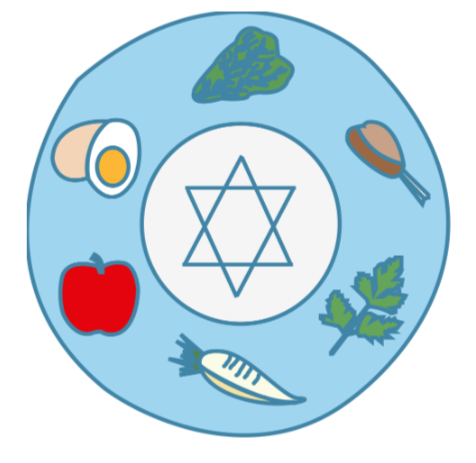
Passover, or Pesach in Hebrew, celebrates the liberation of Hebrews from slavery in Egypt. It symbolizes freedom and remembrance; it is the story of how the Hebrew redemption from slavery has shaped many Jewish values today. For eight days, Passover is celebrated with many rituals that represent its story. One ritual is the Passover Sedar that takes place on the first two nights of the holiday when Jewish families read from the Haggada—a Jewish book used as a guide to tell the Passover story—and eat symbolic foods like matzah, which is unleavened bread.
Matzo:
Matzo is a flat, unleavened bread. It reminds Jewish people of the haste with which Hebrew people left Egypt. They fled so quickly that they did not give their bread enough time to rise. Leavened bread is prohibited during Passover, so Jewish people eat matzo instead.
Maror:
Maror, bitter herbs or horseradish, are symbolic of the bitterness and severity of the slavery and oppression that the Hebrews endured in Egypt.
Charoset:
Charoset is a sweet mixture of nuts, apples, cinnamon, and sweet red wine. The word charoset comes from the Hebrew word for clay as it is representative of the mortar that the Hebrews used to build pyramids in Egypt.
Karpas:
Karpas, often replaced by parley or other leafy green vegetables, represents the time when the Hebrews flourished before being enslaved in Egypt. At the beginning of the sedar, it is dipped into salt water to represent the tears that the Hebrews shed during their enslavement.
Z’roah:
The Z’roah is a roasted lamb shank that symbolizes the lamb the Hebrews sacrificed as a Passover offering. It is also a reminder of the sacrifices made by the Jewish people in their pursuit of freedom and the continuing sacrifices that need to be made to overcome adversity and antisemitism.
Beitzah:
In Judaism, a beitzah, or a hard-boiled egg, represents a sacrifice made in the Jerusalem temple. It symbolizes mourning and grief over the temple’s destruction because, traditionally, eggs were given to mourners directly after a funeral.
Chazeret:
Chazeret, or romaine lettuce, like maror, is a bitter herb. It is the second bitter herb on the Seder plate, and it also symbolizes the severity of a life lived in slavery.







